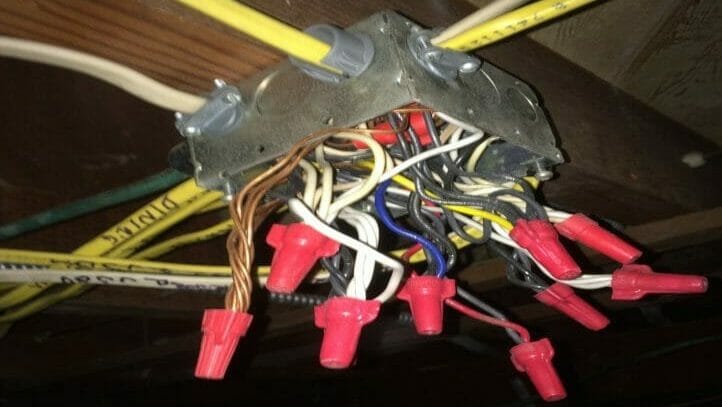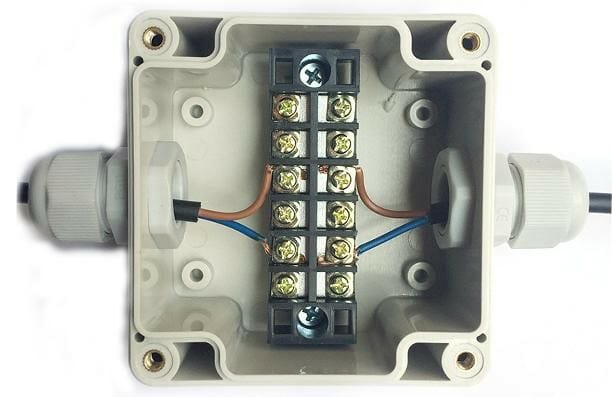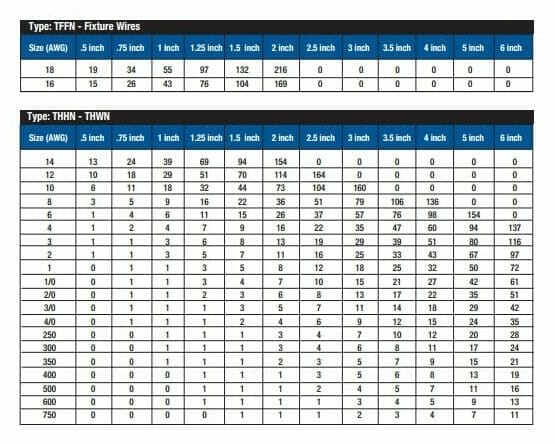How Many 12 Wires in a Junction Box?

The number of wires Junction boxes can hold varies according to the wire size or gauge.
For instance, a plastic single gang box (18 cubic inches) can hold up to eight 12 gauge wires, nine 14 gauge wires, and seven 10 gauge wires. Do not exceed these requirements; otherwise, you will put your electrical fixtures, wires, and appliances in jeopardy. During my work as a certified electrician, I noticed that people generally overload their junction boxes.
A maximum of eight 12 gauge wires can fit in a plastic single gang junction box – with a total volume of 18 cubic inches. On the same size box, nine 14 gauge wires and seven 10 gauge wires can fit perfectly.
We will go into more detail in our guide below.
Electrical Code for the Electrical Box Fill Capacity
There is a maximum number of wires that an electrical box can contain without issue. However, many people make mistakes by overloading the electrical box with too many wires.
An overcrowded electrical box poses danger to the electrical fixtures, appliances, and the user. Switches and outlets cannot fit properly in a clumsy box. As a result of constant friction between the cables, unreinforced connections might break loose and contact inappropriate wires. That can cause fires and/or short-circuiting. Another obvious issue is damage to the wires.
So, always stuff a recommended number of wires in your electrical box to avoid such accidents. The information in the next slide will help you develop a proper plan for your electrical box. (1)
What is the Minimum Size Junction Box for your Electrical Wiring?

The box fill table in the next section indicates the various sizes of electrical boxes for electrical wiring. The minimum size electrical box is the smallest one on the box fill table.
However, conventionally, the permitted box volume for one box is 18 cubic inches. Let’s look at the three parameters that must be computed to establish the various minimum requirements for the electrical box wiring. (2)
Part 1. Box Volume Calculations
The obtained values define the volume of a wiring enclosure (box). The doomed sections are also included in account in the calculation.
Part 2. Box Fill Calculations
It describes the techniques of computing how much fill or volume may be occupied by the wires, clamps, switches, receptacles, and equipment grounding conductors.
Part 3. Conduit Bodies
They cover enclosing number six (No. 6) AWG or smaller conductors. It requires the computation of the maximum number of conductors.
The Box Fill Table

Comments on the box fill table information:
- All ground wires count as one conductor in the electrical box.
- The wire threading through the box counts s one wire.
- Each wire coming into the splice connector count as one wire.
- A wire connecting to any device is counted as one cable of that size.
- The total conductor count is increased by two for each mounting strap whenever devices are mounted in the box.
Wrapping Up
Always be mindful of the dangers of stuffing many wires into an electrical box. Ensure you comprehend the minimum requirements of the junction box as outlined in the box fill table before you do the wiring.
I hope this guide helps you to adhere to the AWG and box fill minimum requirements for your wiring project.
Take a look at some of our related articles below.
- A wire rope sling with a strength
- What size wire for electric stove
- What happens if ground wire is not connected
References
(1) develop a proper plan – https://evernote.com/blog/how-to-make-a-plan/
(2) volume – https://www.thoughtco.com/definition-of-volume-in-chemistry-604686
